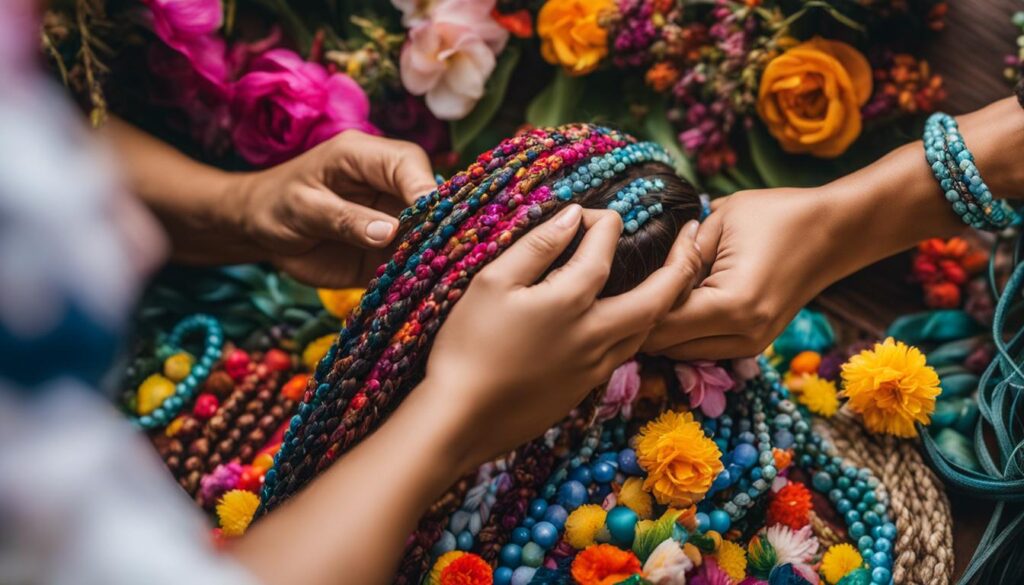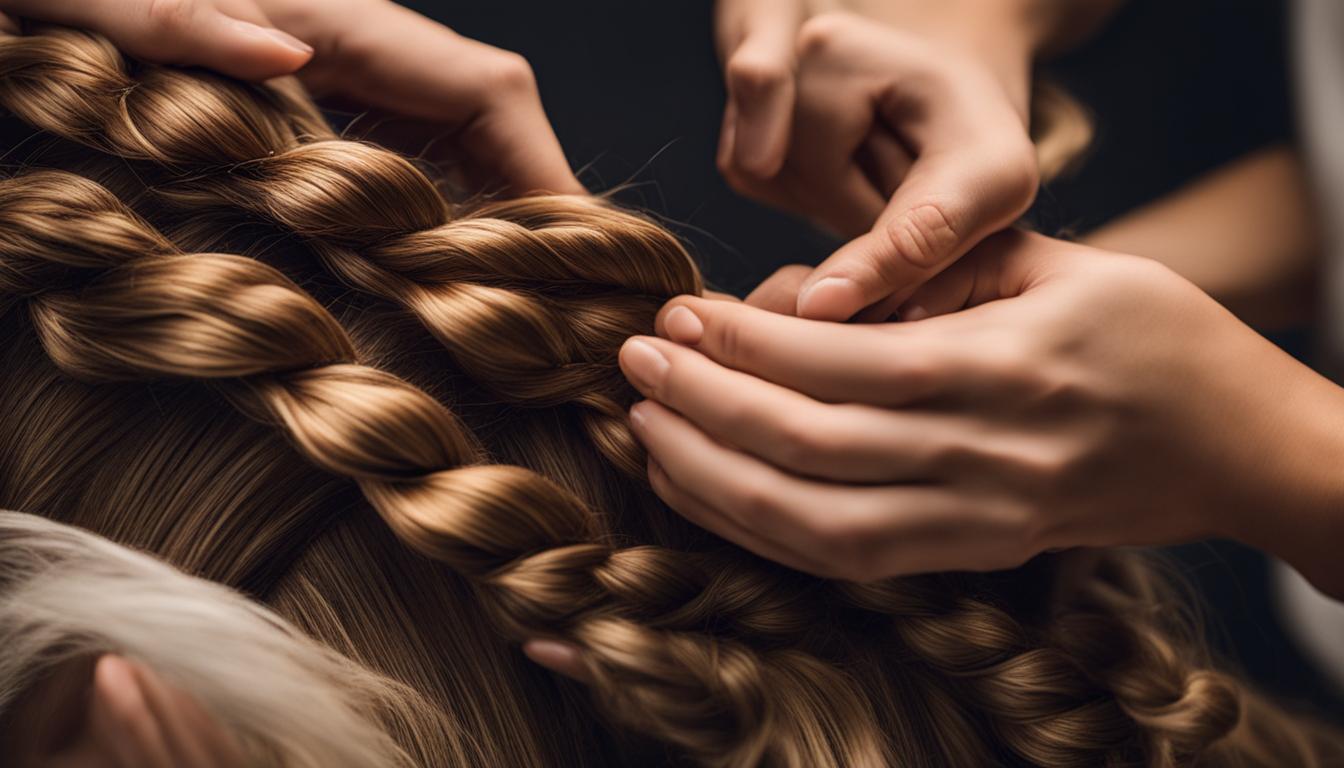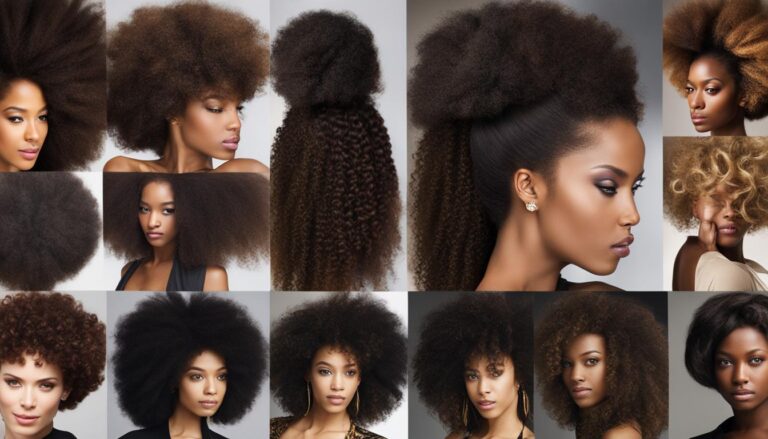Is Braiding Hair a Skill?
Braiding hair is a popular technique that allows for the creation of various hairstyles, adding texture and dimension to any look. But is braiding hair a skill that can be learned and mastered? Let’s explore the world of braiding and its endless possibilities.
Braiding is not just a simple task of weaving strands of hair together; it requires precision, creativity, and attention to detail. With practice and dedication, anyone can develop the skill to create beautiful braided hairstyles.
Key Takeaways:
- Braiding hair is a skill that can be learned and mastered through practice.
- There are various types of braids, each offering its own unique look and style.
- Braiding hair allows individuals to express their creativity and create stunning hairstyles.
- Learning how to braid hair opens up potential career opportunities in the hairstyling industry.
- Mastering the art of braiding can lead to personal satisfaction and the ability to offer braiding services to others.
Popular Types of Braids
1. Rope Braids:
Rope braids are a trendy and versatile braiding technique that adds texture and interest to any hairstyle. To create a rope braid, divide your hair into two sections. Twist each section in opposite directions and then wrap them around each other, forming a rope-like appearance. This braiding technique works well with both long and short hair and can be worn for casual or formal occasions.
2. Dutch Braids:
Dutch braids, also known as inverted braids or inside-out braids, are a popular choice for creating intricate and eye-catching hairstyles. To create a Dutch braid, start by dividing your hair into three sections. Instead of crossing the strands over each other, cross them under each other. This technique creates a raised, 3D effect and adds depth to your braided hairstyle.
3. French Braids:
French braids are classic and elegant braided hairstyles that never go out of style. To create a French braid, divide your hair into three sections at the top of your head. As you braid, add small sections of hair from the sides to each strand before crossing them over each other. This technique creates a flat, 2D effect and gives your hairstyle a polished and sophisticated look.
4. Fishtail Braids:
Fishtail braids are intricate and visually stunning braided hairstyles that are perfect for any occasion. To create a fishtail braid, divide your hair into two sections. Take a small strand of hair from the outer edge of one section and cross it over to join the opposite section. Repeat this process, alternating between the right and left sections, until you reach the end of your hair. The result is a beautiful fishtail-like effect that adds a touch of elegance to your hairstyle.
5. Waterfall Braids:
Waterfall braids are delicate and romantic braided hairstyles that create a beautiful cascading effect. To create a waterfall braid, start by dividing your hair into three sections. As you braid, drop a small section of hair from the top strand after each weave and replace it with a new section of hair. This technique creates the illusion of a waterfall flowing through your hair, adding a touch of whimsy to your hairstyle.
Benefits of Learning Braiding
Learning how to braid hair offers numerous benefits that go beyond just creating beautiful hairstyles. It is a skill that can be learned and mastered, making it accessible to beginners and offering a world of possibilities for those interested in hairstyling. Here are some key benefits of learning braiding:
- Creativity and Self-Expression: Braiding taps into your creativity, allowing you to express yourself through unique and personalized hairstyles. You can experiment with different braiding techniques, patterns, and accessories to create stunning looks that reflect your personal style.
- Versatility for Various Occasions: Braiding is a versatile skill that can be used for any occasion. Whether you’re attending a casual outing or a formal event, knowing how to braid hair gives you the ability to create hairstyles that suit the occasion perfectly.
- Accessible and Cost-Effective: Unlike many other hairstyling techniques, braiding doesn’t require expensive tools or products to get started. All you need is a comb, some hair elastics, and your creativity. This accessibility makes it an ideal skill for beginners or anyone looking to learn a new hairstyling technique without breaking the bank.
- Universal Skill: Braiding is a skill that transcends borders and cultures. It is practiced and loved all around the world, making it a universal language in the hairstyling industry. Whether you’re at home or traveling, knowing how to braid hair can connect you with people from different backgrounds and create new opportunities.
- Generational Tradition: Braiding is a skill that can be passed down from generation to generation. It is a beautiful tradition that brings families together and creates a sense of pride and connection. Learning how to braid hair can not only strengthen family bonds but also open doors to a potential family business in the hairstyling industry.
Expert Tip: Braiding Hair Tips for Beginners
“Start with simple braiding techniques, like the classic three-strand braid, and gradually progress to more complex styles. Practice regularly on different hair textures and lengths to build your skills. And don’t be afraid to experiment and add your own creative touch to each braid!”
As you continue to learn and improve your braiding skills, you’ll discover new techniques, styles, and trends that will enhance your hairstyling repertoire. Whether you’re braiding your own hair or offering braiding services to others, the ability to braid hair opens up a world of creativity and potential career opportunities.

Braiding as a Career
Are you passionate about styling hair and looking for a rewarding career in the hairstyling industry? Consider becoming a professional braider! With the right skills and training, you can turn your passion for braiding into a fulfilling career. Whether you choose to work as a self-employed braider or in a salon, the opportunities for growth and creativity are endless.
As a braider, you have the freedom to set your own terms, conditions, and pricing when working independently. This allows you to have full control over your career and work-life balance. You can choose to specialize in specific braiding techniques or offer a wide range of braided hairstyles to cater to diverse client preferences.
If you decide to work in a salon, you’ll have the chance to learn from experienced hairstylists and expand your skillset further. Working alongside professionals in a salon setting can provide valuable mentorship and opportunities for skill development. You can also gain exposure to other hair styling techniques and broaden your clientele.
Continued Learning and Growth
Braiding is an art form that offers continuous learning and growth. You can explore new techniques, experiment with different styles, and stay up-to-date with the latest trends in braided hairstyles. With each braid you create, you’ll gain more experience and refine your skills.
“Braiding is not just about styling hair; it’s about creating wearable art.”
By constantly challenging yourself and pushing the boundaries of your creativity, you can establish yourself as a sought-after braiding specialist. Whether you choose to work on fashion shows, editorial shoots, weddings, or everyday clients, your braiding skills will be highly valued and appreciated.
Conclusion
Learning how to braid hair is a valuable skill that opens up a world of possibilities in hairstyling. Whether you want to braid your own hair or offer braiding services to others, mastering this skill can lead to beautiful and unique hairstyles.
Braiding hair requires practice, creativity, and a keen eye for detail. It is an art form that offers both personal satisfaction and potential career opportunities. With your hair braiding skills, you have the ability to create stunning looks for any occasion.
So, why not start exploring the world of braiding? There are plenty of resources available to help you learn how to braid hair, from tutorials to workshops. Whether you prefer classic braids or want to experiment with more intricate styles, the possibilities are endless.
Don’t be afraid to unleash your creativity and try new techniques. With time and dedication, you can become a master braider, offering your skills to others and creating beautiful hairstyles that will leave a lasting impression.
FAQ
Is braiding hair a skill?
Yes, braiding hair is a skill that can be learned and mastered with practice.
What are some popular types of braids?
Some popular types of braids include rope braids, Dutch braids, French braids, fishtail braids, and waterfall braids.
What are the benefits of learning braiding?
Learning how to braid hair allows for creativity, expression, versatility, and the potential for a career in hairstyling.
Can braiding be a career path?
Yes, braiding can be a career path, offering opportunities for self-employment or working in a salon as a braider.
How can I start learning how to braid hair?
You can start learning how to braid hair by practicing different techniques, watching tutorials, and seeking professional training if desired.







